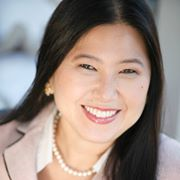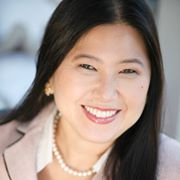
Dr. Constance Chen
While it is seldom a sign of something serious, pain that doesn’t go away after one or two menstrual cycles or that persists in women after menopause should be evaluated by a doctor.
NEW YORK (PRWEB)
November 17, 2020
Most women suffer some form of breast pain at some point in their lives. It may be mild or severe, constant or intermittent. It may be in the form of soreness, sharp burning pangs, or tightness. “Breast pain, or mastalgia, is usually straightforward to diagnose and treat,” says plastic surgeon and breast specialist Dr. Constance M. Chen. “While it is seldom a sign of something serious, pain that doesn’t go away after one or two menstrual cycles or that persists in women after menopause should be evaluated by a doctor.”
Most breast pain is cyclical – linked to hormonal fluctuation associated with the reproductive cycle. Women describe cyclical breast pain as the breasts feeling heavy, tender, swollen, and achy. It is caused by increases in estrogen and progesterone that occur before the menstrual period and cause the breasts to swell. Cyclical breast pain generally affects both breasts, intensifies in the week or two leading up to the menstrual period, then recedes. It most often affects women during their childbearing years and as they are approaching menopause. Breast tenderness can be eased with over-the-counter pain relievers and by reducing salt, fats, and caffeine in the diet. Birth control pills – or switching to a different formulation – can also help.
Dr. Chen notes: “The breasts may remain tender during the first trimester of pregnancy in response to increased hormone levels and that continuing breast soreness often accompanies a missed menstrual period as an early sign of pregnancy.”
Fibrocystic breast disease, also triggered by hormones, is characterized by dense, lumpy breast tissue that may become painful in response to the monthly cycle. The lumps are fluid-filled cysts and can be clearly differentiated from more dangerous lumps composed of a solid mass of cells that may signify a benign or malignant tumor. Cysts may resolve on their own but any lump in the breast must be evaluated by a doctor via mammogram, ultrasound, or aspiration – drawing fluid from the cyst.
Non-cyclical breast pain — unrelated to reproductive hormones – most often occurs in one breast and in a localized area though the pain may spread throughout the breast. There are several causes:
Mastitis is most common in breast-feeding women (lactation mastitis) but can occur at any time. It is characterized by inflammation of the breast tissue that causes swelling, redness, pain, and warmth and sometimes fever and chills. During lactation, mastitis is usually caused by a blocked milk duct or by bacteria entering the breast through an opening in the skin or a cracked nipple. It is generally treated with antibiotics.
Injury to the breast can be from a previous surgery, from an accident, or from sports. There may be a sharp pain at the time of the trauma followed by tenderness for days or weeks. A doctor should be seen if pain doesn’t subside or if there is redness and warmth, which could indicate the presence of infection, if there is severe swelling, or if there is a bruise that doesn’t go away.
Support issues are most often experienced by women with large, heavy breasts but poor support can cause the ligaments to stretch and cause pain in breasts of any size, particularly after exercise. Pain may also affect the neck, back, and shoulders. A properly fitted, supportive bra should be worn at all times and a sports bra when exercising.
Medications can cause breast pain as a side effect. Hormonal therapies used in infertility treatment, birth control pills, and hormonal replacement after menopause can cause breast tenderness. Some psychiatric medications and those used for coronary disease can also have this effect.
“Many women worry that breast pain might be a sign of breast cancer,” says Dr. Chen. ”While this is unusual, it’s not impossible. Inflammatory breast cancer, which accounts for 1%-5% of breast cancers does cause pain as well as redness, swelling, and thickened or dimpled skin. The important thing for women to know is that while most breast pain isn’t dangerous, any condition that doesn’t resolve over the course of the menstrual cycle or a week or two should be evaluated by a doctor. In the vast majority of cases, treatment will be rapid and effective.”
Constance M. Chen, MD, is a board-certified plastic surgeon with special expertise in the use of innovative natural techniques to optimize medical and cosmetic outcomes for women undergoing breast reconstruction. She is Clinical Assistant Professor of Surgery (Plastic Surgery) at Weill Cornell Medical College and Clinical Assistant Professor of Surgery (Plastic Surgery) at Tulane University School of Medicine. http://www.constancechenmd.com
Share article on social media or email:

